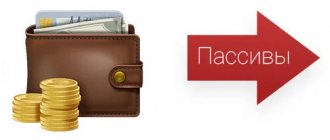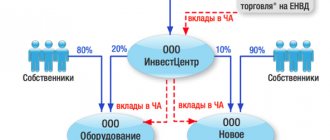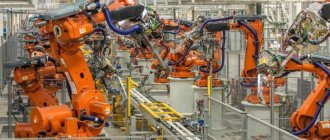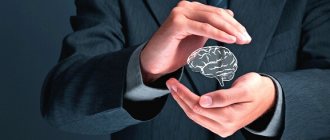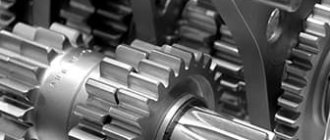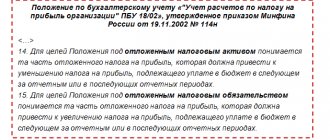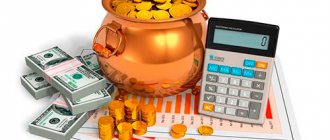What are assets and liabilities
Assets are what generate income. Buildings, apartments, cars, money in accounts, etc., if they work and make a profit. On the contrary, liabilities are expenses that ensure the operation of the enterprise. The relationship between expenses and income is reflected in the balance sheet. This is perhaps the most difficult and important subject in accounting to understand.
Difference between liabilities and assets
A simple and ingenious example is shown in the cartoon “Three from Prostokvashino”. Remember?
The cow was rented. She gives milk - this is an asset. She also calved. The rent for it is a liability. We bought a cow and a calf and reduced our liabilities. There was one animal, now there are two. Both will be profitable. By the way, a ready-made version of the business model! But this is so, schematically. Let me look at the problem deeper.
Are own shares an asset or a liability?
There is an opinion that if a company can sell its securities and get money for them, then these are assets. Not certainly in that way. The result of the sale will indeed be the proceeds. They can be used for different purposes. And the shares themselves are a liability. They act as a mechanism for obtaining funds.
Interaction of assets and liabilities
Here is an everyday example: a citizen bought a car to go to work and to his dacha. Here he acquired a liability. The car immediately lost value because... It became used and requires expenses for refueling, repairs, storage, etc. Then this man decided to work on his car, receiving a fee for it. Then the car becomes a core asset. With its help, a person makes a profit. At enterprises the situation looks similar.
Assets and liabilities in financial statements
These are the main indicators that allow you to almost completely evaluate the activities of the enterprise. They are correlated with each other and are reflected in the form of a table. Simply put, these are items in the general balance sheet – the enterprise’s report for a certain period of time.
Assets and liabilities according to Kiyosaki
This gentleman has published 26 books on financial topics. His brilliant work “Rich Dad Poor Dad”, along with other works, is sold all over the world.
The writer’s main thesis can be formulated as follows: “Assets bring you money, whether you work or not. Liabilities take your money, whether you work or not.”
Of course, these are the basics of economics “for dummies.” This approach is too simplistic and controversial. However, in everyday life this is quite acceptable. It's more difficult with companies. Judge for yourself.
Financial report of a middle class man
This figure shows a more standard situation. The middle class earns more, so its expenses are wider. Why are these people experiencing financial difficulties? Because the main source of income, like the poor, is salary, and the “Assets” column is still empty. As wages increase, taxes rise accordingly. As income increases, so do expenses.
The problem is that these expenses are not related to assets. As soon as a person starts earning more, he begins to think “it’s time to expand the living space,” “new renovations,” “new household appliances,” “a car of a different brand,” and so on. But these are all liabilities, and money slips through your fingers.
The situation for the middle class is more complicated than for the poor. Earning more, people think that it will always be this way and even better. They begin to “improve” their quality of life with liabilities. This is running in circles.
When I hear that doing business involves big risks, I am overcome with bewilderment. Is it serious to think that business is a big risk, and consider mortgages, car loans and credit cards to be the norm?
I believe that this approach to life is very risky. Because there are no assets, but there are expensive liabilities that require servicing, and loans. There will be a moment when you do not receive your salary, creditors will take their toll.
Hope for a stable salary, social support, pension, free healthcare and education is just hope. Nothing guarantees all of these benefits. This is why it is so important to be a financially literate person. Be able to invest in assets in order to receive additional income not from the salary fund. And also have an airbag for at least a few months of life.
Kinds
I will present the balance sheet of the organization in the form of a table.
| Assets | Liabilities |
| Negotiable. Money or goods to be sold within a year. | Equity. It is formed from the money of the founders. It turns out that the company, as it were, borrows money and is obliged to return it to the owner. Conditionally, of course. But since it must, it means a liability. |
| Non-negotiable. What the company is not going to sell: land, buildings, machines, vehicles, long-term investments, etc. | Securing future payments. |
| Future expenses. Expenses carried over to the next period after the reporting period. Example: car insurance for 2 years. Payment for the second year of the insurance policy, in this year’s report, will be reflected in the “Assets” column. | Long term duties. Own shares, bonds, mortgages, leasing, loans, etc. |
| Revenue of the future periods. Something for which money has already been received, but services or supplies will be made next year. | Current expenses (liabilities). |
What to do with liabilities and assets
Mr. Kiyosaki speaks out clearly on this matter: get rid of the former and accumulate the latter. By the way, this approach causes criticism against him. According to the guru, I should sell my car because it is not generating income. Dacha - for the same reason. Yes, a lot more.
On the other hand, if I earn less than I pay for the maintenance of my liabilities, then sooner or later I will lose them anyway. Therefore, in my opinion, it can be formulated this way: maximize your income-generating property, reducing expenses to reasonable limits. This is exactly what successful companies do.
Robert Kiyosaki's assets
In one of his interviews with Forbes magazine, Kiyosaki said that his main asset columns are intellectual property (Rich Dad seminars, books, games) and real estate rentals. There is no information about the full set of assets, but it is known that, among other things, the financial guru actively invests in the oil industry, precious metals and coins, solar panels and financial markets.
You may also be interested in other articles on books by Robert Kiyosaki:
- A person's thoughts shape his life
- Rich people don't work for money
- Why financial literacy is needed
- The path itself is the goal
- Cash Flow Quadrant
- Financial freedom, what is it?
Author: Nikita Kuznetsov
What are the net assets of an enterprise (NA)
The company has its own funds, which can be valued in money. There are also debt obligations. The difference between the first and second shows the enterprise's NA.
CA and legislation
Order No. 84n of the Ministry of Finance of the Russian Federation dated August 28, 2014 approves their definition. Net assets are all the assets of the organization (JSC), with the exception of the receivables of the founders in the authorized capital.
Debt obligations (DL) are all debts of an enterprise, excluding income that will be received in a future period. Assistance from the state or property received free of charge is not taken into account.
Calculation formula
NA = AO – DO. Property that is in the temporary use of an enterprise is not taken into account when determining the NA.
How are the assets and liabilities of the balance sheet formed?
The basic rule for drawing up a company's balance sheet: the indicators must be equal to each other. For example, a company took out a loan for 500 thousand rubles. This money is reflected in the asset column. At the same time, they are entered into liabilities as debt of the enterprise.
Net assets of the enterprise: interpretation
A positive NA indicator of an enterprise indicates the efficiency of its work. This indicator is taken into account by investors when making decisions about purchasing securities, and by banks when making lending decisions.
On the other hand, young enterprises may have a negative NAV but not be unprofitable. Therefore, these figures should be studied over time.
Calculation example
LLC "Mechta Agraria" produces household equipment. The annual balance sheet is as follows: non-current assets (residual value of fixed assets, contributions to construction, long-term investments) - 16,000,00 rubles. Current assets (own funds, debts of third parties, inventories of goods) – 800,000 rubles.
Balance sheet liabilities: loans – 400,000 rubles, current expenses – 700,000 rubles.
NA = 1,600,000 + 800,000 – 400,000 – 700,000 = 1,200,000 rub.
Balance sheet codes and lines
The balance sheet is compiled according to a certain algorithm. There is a separate line for each indicator. Lines are assigned individual codes for ease of statistical accounting and control.
Each line expresses a cost indicator showing the operation of the enterprise. Modern codes are displayed as a four-digit number, with each digit containing specific information.
So, for example, line 1150 (fixed assets) is deciphered as follows: 1 – type of document (in this case, balance sheet); 1 – non-current assets; 5 – type of asset; 0 – line-by-line detailing of indicators.
Non-core assets are also displayed by the accounting department in the balance sheet of the enterprise.
Diagnostics of business efficiency using the net asset method
One of the main conditions for the prosperity of an enterprise is the constant search for opportunities to increase the number of assets. A negative value of this indicator may indicate that the company is unprofitable, insolvent, and exists on the money of creditors. In this case, the company may be liquidated through court proceedings.
Poor man's financial report
In the previous article we talked about financial literacy. The fact that the population is not taught how to manage money. We are taught only skills that will make us good workers. In this case, life is determined by the amount of wages. And this means:
- You are working for the development of someone else's company
- You are most likely paying off loans and mortgages. This is a liability that increases monthly payments
- You work for the state
Deductions from an employee’s salary in Russia:
- Personal income tax 13% (personal income tax)
- PF 22% (pension fund)
- FSS 2.9% (social insurance fund)
- Compulsory medical insurance fund 5.1% (compulsory health insurance fund)
- According to the law, personal income tax is paid by the employee, the remaining 3 taxes are paid by the employer. In reality, of course, the employee pays everything. Because the employer does not pay this 30% additionally to the employee in the form of salary. Personal income tax, by the way, can be partially returned; read about this in Article 218 of the Tax Code.
The picture shows that a poor person only has enough money from paycheck to paycheck. He can only afford to cover his minimum expenses. This approach to life is very risky. Due to the fact that a person’s “Assets” column is empty, he receives money only while he is working. In case of unforeseen situations, a person is left without a livelihood. Anyone can experience health problems, layoffs at work, or eviction from rented housing. In this case, a person without savings will get into debt and loans, which will worsen his situation. Those who have experienced this themselves are unlikely to want to repeat this again.
In order to prevent this, you must:
- To begin with, Kiyosaki advises getting rid of debt. Sell that part of your valuable property that you can do without. This could be jewelry, branded clothing, household appliances, a car
- Review your expenses and eliminate everything unnecessary (we tell you how to keep track of income and expenses here)
- Start saving money for future investments
- Change your job to a higher paying one, retrain, or start your own business.
Valuation of assets on the balance sheet
This approach uses company reports. This is necessary to determine the value of property, both tangible and intangible, as well as existing liabilities. Along with market valuation and revenue assessment, it helps create a holistic picture of the company's performance.
Cost and average value of total assets
The sum of current and non-current assets shows the value of the company's total assets. In simple words: if we add up these indicators at the beginning and end of the year and divide by 2, we get the average total assets of the organization for the year. This data is needed to assess the dynamics of enterprise development.
Real assets ratio
Characterizes the potential of the company's activities. It is calculated from the sum of the residual value of fixed assets, raw materials, materials, intangible assets, and work in progress. The result obtained must be divided by the value of the organization’s property.
It looks like this: Kr.a = page 100 + page 120 + page 211 + page 213 / page 300 balance. For an enterprise engaged in production, this coefficient must exceed 0.5. A decrease in the coefficient shows a negative trend in the subject’s activity, an increase – a positive one.
Asset immobilization ratio
Share of non-current assets in the balance sheet. Characterizes the degree of liquidity of the enterprise’s property and the ability to meet its obligations.
Permanent Balance Index Ratio
Shows how financially stable and solvent the company is, regardless of the funds raised. It is calculated by the ratio of non-current assets (line 1100) to the equity capital indicator (line 1300).
These, and a number of other ratios that reflect the company’s performance, are very carefully assessed by professional investors. Making a decision to purchase securities should not be based solely on intuition or the opinions of third-party experts. You need to carefully study all the indicators.
I hope this article was helpful to you. Subscribe to our news, share them with friends on social networks. All the best.

